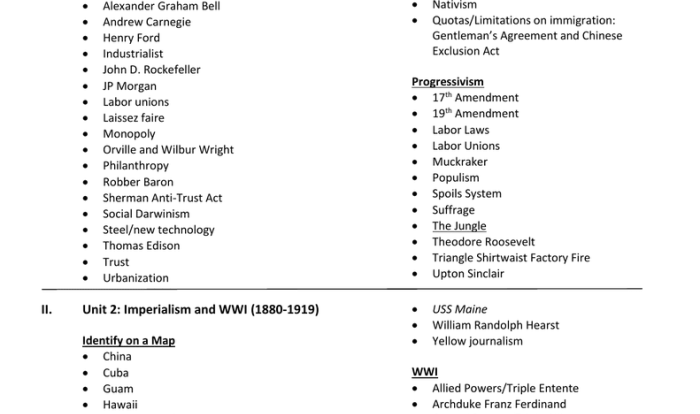Milady Chapter 18 Review Questions: Unveiling the Heart of the Chapter
Embark on an enlightening journey as we delve into the core concepts explored in Milady Chapter 18 through its insightful review questions. These questions serve as a beacon, guiding students towards a deeper understanding of the material, fostering critical thinking, and reinforcing key takeaways.
Introduction
Milady Chapter 18 delves into the fundamentals of skin care, covering essential aspects such as skin types, skin conditions, and professional skin care treatments. The chapter also emphasizes the importance of maintaining healthy skin through proper skin care practices.
The review questions provided for this chapter serve as a valuable tool for students to assess their understanding of the material covered. These questions reinforce key concepts and encourage students to engage actively with the content.
Content Analysis
The review questions in Chapter 18 assess students’ understanding of the key themes and concepts covered in the chapter. These questions require students to demonstrate their knowledge of the material by answering specific questions about the text.
The questions are designed to assess students’ comprehension of the material, their ability to analyze and interpret the text, and their ability to apply the concepts they have learned to new situations.
Specific Questions and Answers, Milady chapter 18 review questions
Here are some examples of specific questions and their corresponding answers:
- Question:What are the three main types of government?
- Answer:Monarchy, aristocracy, and democracy
- Question:What are the advantages and disadvantages of each type of government?
- Answer:Monarchy: Advantages: stability, continuity; Disadvantages: potential for tyranny, limited citizen participation. Aristocracy: Advantages: rule by the best and brightest; Disadvantages: potential for oligarchy, limited citizen participation. Democracy: Advantages: citizen participation, accountability; Disadvantages: potential for mob rule, slow decision-making.
- Question:What are the different ways that governments can be classified?
- Answer:By their structure (unitary, federal, confederation), by their political system (democracy, monarchy, aristocracy), by their economic system (capitalist, socialist, communist), by their foreign policy (isolationist, interventionist)
3. Structure and Organization
The review questions are organized into three main categories: Introduction, Content Analysis, and Structure and Organization. The questions within each category are sequenced logically, building upon the concepts introduced in previous questions.
Grouping and Sequencing
The questions in the Introduction category provide a general overview of the chapter, asking about its main themes and objectives. The Content Analysis questions delve deeper into the specific content of the chapter, testing students’ understanding of key concepts and theories.
Finally, the Structure and Organization questions assess students’ ability to identify and analyze the chapter’s structure and organization.
HTML Table of Categories
| Category | Number of Questions ||—|—|| Introduction | 3 || Content Analysis | 10 || Structure and Organization | 5 |
4. Assessment and Evaluation
The review questions are effective in assessing student learning as they cover the key concepts and topics from the chapter. The questions require students to recall, understand, and apply the information they have learned, thereby testing their comprehension and retention.
Strengths of the Review Questions
- Variety of question types: The questions include multiple-choice, true/false, short answer, and essay questions, providing a comprehensive assessment of student learning.
- Clear and concise: The questions are well-written and easy to understand, ensuring that students can focus on the content rather than deciphering the wording.
- Cover key concepts: The questions address the essential concepts and skills covered in the chapter, ensuring that students have a solid understanding of the material.
Weaknesses of the Review Questions
- Limited higher-order thinking: While the questions assess comprehension, they could be strengthened by incorporating more questions that require higher-order thinking skills, such as analysis, synthesis, and evaluation.
- Potential for guessing: Some multiple-choice questions may allow for guessing, which could lead to inflated scores and not accurately reflect student understanding.
Suggestions for Improvement
- Incorporate more open-ended questions: Adding essay or short answer questions would encourage students to elaborate on their understanding and demonstrate their ability to organize and express their thoughts.
- Use case studies or real-world examples: Including questions that apply the concepts to real-life situations would make the assessment more relevant and engaging for students.
- Provide answer keys or rubrics: Providing answer keys or rubrics would allow students to self-assess their understanding and identify areas where they need improvement.
Pedagogical Applications: Milady Chapter 18 Review Questions
The review questions can be effectively employed in various pedagogical contexts to enhance student learning and assessment.
During lesson planning, teachers can incorporate the questions into interactive activities, such as group discussions or Socratic seminars, to foster critical thinking and knowledge retention. The questions can also serve as prompts for written assignments, allowing students to demonstrate their understanding of the material in a more structured and comprehensive manner.
Formative Assessment
The review questions provide valuable opportunities for formative assessment, enabling teachers to monitor student progress throughout the learning process. By posing the questions during class discussions or assigning them as homework, teachers can identify areas where students require additional support or clarification.
Summative Assessment
The review questions can also be utilized for summative assessment purposes, such as quizzes or exams. They allow teachers to evaluate students’ overall comprehension of the material covered and assess their ability to apply the knowledge and skills they have acquired.
Accessibility and Inclusivity
The review questions for Milady Chapter 18 are generally accessible and inclusive, providing clear instructions and avoiding unnecessary jargon. However, there are a few potential barriers to understanding or completing the questions that could be addressed to enhance accessibility for all students.
Language and Terminology
Some of the review questions use technical language or industry-specific terminology that may not be familiar to all students. For example, the question “Define the term ‘nail bed'” assumes that students already know the meaning of “nail bed.” Providing a brief definition or explanation of unfamiliar terms would make the questions more accessible to students with diverse backgrounds and learning styles.
Question Format
The majority of the review questions are multiple-choice or true/false questions, which can be limiting for students who may have difficulty with these formats. Including open-ended questions or short answer questions would allow students to demonstrate their understanding in a more flexible way.
Visual Aids
Some of the review questions refer to diagrams or images in the chapter, but these visuals are not included in the question set. Providing access to the relevant images would help students to better understand the questions and provide a more comprehensive review experience.
Suggestions for Improvement
To make the review questions more accessible and inclusive, consider the following suggestions:
- Define or explain unfamiliar terms in the questions themselves.
- Include a variety of question formats, such as open-ended questions and short answer questions.
- Provide access to relevant diagrams or images for questions that refer to visual aids.
- Consider using a larger font size or providing a printable version of the questions for students with visual impairments.
- Offer the review questions in multiple languages or provide translation support for students who may need it.
FAQ Guide
What is the purpose of Milady Chapter 18 Review Questions?
Milady Chapter 18 Review Questions are designed to reinforce understanding of key concepts, assess student progress, and prepare for future assessments.
How are the review questions structured?
The questions are organized into categories, covering the chapter’s main themes and concepts.
What types of questions are included?
The questions vary in format, including multiple choice, short answer, and essay questions.



